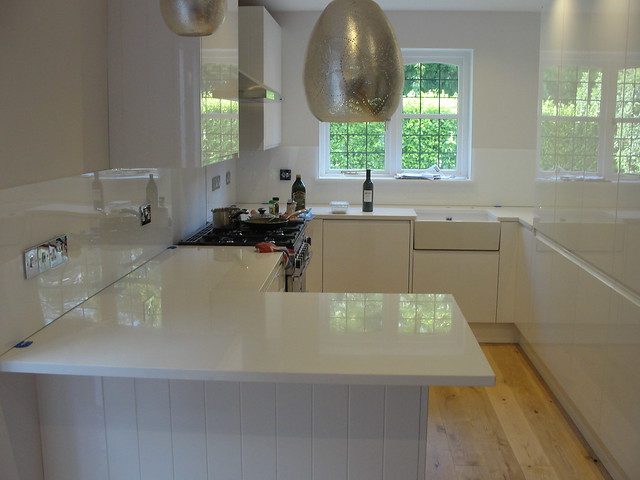Lons
Established Member
Cutting is not a problem if the correct blade is used i.e. we used a 300mm x 64t negative rake TCT on standard table saw and Holz-her wall saw at normal high speeds and never had a blade "weld"Eric The Viking":24h4rdat said:I've had the weld-behind-the-blade thing happen in the past, on a motorcycle windscreen (which was expensive!). Hand tools are the way to go, and sand, don't attempt to plane.
Decades ago, I had a summer job in a light engineering factory. We made a lot of small parts - scales, verniers, etc. - from Perspex (= Plexiglas = acrylic). We always finished the edges with a slow-running linisher (belt sander). You can get a really good finish by ending the sanding with Jif-type cream cleaner, followed, if necessary, by toothpaste. There's also some special polish called Novus which you can find on eBay.
You can theoretically melt the edges to be smooth by running a blowlamp along, but use a butane one as it's cooler, and don't hesitate anywhere. I struggle to make this work well though. I'd guess you might try a domestic iron and greaseproof paper, but it might not be hot enough. There's a very fine line between melting and burning the stuff.
I've had equipment cases made up in 3mm and 6mm in the past (for exhibitions). I used an architectural modelmakers, who were happy to do it. They had a special Perspex bonding system with UV curing glue: you put a few drops along the joint, then hit it with a really strong UV source (with a fibre-optic light pipe, I think). The UV helped the glue spread and cured it, so the joint became almost invisible, and with no bubbles. Bubbles are almost impossible to avoid otherwise. the UV curing glue doesn't spread beyond the joint (usually) so the result looks really good, but isn't quite mechanically strong as the unjointed material.
I've recently seen other Perspex glue on eBay. The original formula was chips of perspex dissolved in Chloroform - highly inflammable, quite nasty to humans, and with very limited shelf life. I don't know what the current stuff is like, but I have to get some soon to repair a crack in a windscreen.
Hope you succeed, but I think it's one of those jobs where hand tools really win over power. As mentioned, a backing board may be a good idea too, to mimimise breakout.
Hope it goes well,
E.
At home, I regularly cut on my SIP table saw, Startrite bandsay, jigsaw and by hand. I also score and snap anything 3mm down if straight cuts.
To polish edges, the method we always used was a fine flat file followed by very fine abrasive on a hard sanding block. You can micromesh and brasso / chrome polish if required. There are specific polishes available including a 2 part system from ICI (Perspex brand), or at least there was as I have some which I still use to polish acrylic pen blanks on the lathe. I would never advise anyone to use a plane.
Tensol cement is / was available specifically for gluing cast acrylic and I never found it any more hazzardous to use than other solvent based glues. It dries clear and makes a very strong joint. Also, despite the published shelf life, it lasts very much longer and I have a tin now well over 25 years old that still works very well.
Eric is right about the basic formula and you can in fact glue just with chloroform is the surfaces are very good or make up your own cement if you can get hold of the chloroform
Flame polishing edges. Very easy to do with a little practice. As said, keep the flame moving but it doesn't take long to recognise the speed of that as you can see the acrylic melt behind the flame. It's a method which was extensively used in my day by most of the plastic forming and display companies and I've done it numerous times. Like everything, the secret is the preparation, if it isn't smooth first then the results will be poor. The other factor is to match the size of flame to thickness of acrylic, i.e. very small pencil flame for 3mm, larger for 10mm or it won't work properly. The flame should ideally stay within the edge and not lap on to the faces of the sheet.
Just my experience and opinion.
cheers
Bob












